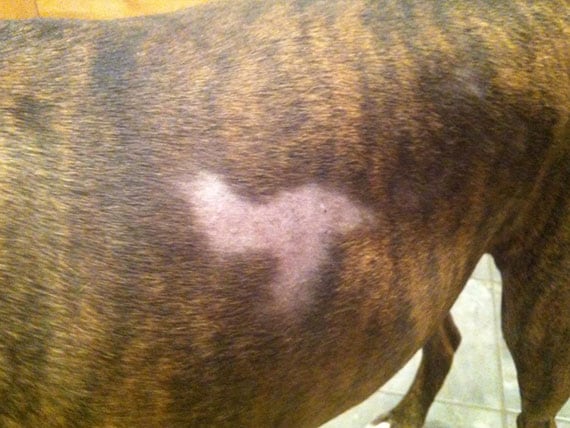Hair Loss In Dogs Patches
Hair Loss In Dogs Patches - Have you noticed that your furry friend has been losing hair in certain areas of their body? Don't worry, this is a common issue that many dog owners face. In fact, there are a variety of factors that could be causing your dog's hair loss, such as allergies, infections, stress, and even genetics. Fortunately, there are steps that you can take to help prevent and treat hair loss patches in dogs. In this article, we'll explore some of the common causes of hair loss in dogs, as well as tips for preventing and treating this issue.
Allergies
Symptoms:

If you notice that your dog has hair loss patches that seem to be itchy or inflamed, they may be dealing with allergies. Some of the most common allergens include pollen, dust, mold, and specific foods. When a dog comes into contact with one of these allergens, their immune system can overreact and cause symptoms such as redness, itching, and hair loss. In some cases, dogs may even develop scabs, rashes, or open sores on their skin. If you suspect that your dog is dealing with allergies, it's important to schedule an appointment with your vet as soon as possible. Your vet can help you identify the specific allergen that is causing your dog's symptoms, and can recommend a treatment plan that may include medication, diet changes, or topical treatments.
Infections
Symptoms:
Another common cause of hair loss in dogs is infections. If your dog has an infection, they may experience hair loss in addition to other symptoms such as redness, itching, and inflammation. Some of the most common types of infections in dogs include fungal infections, bacterial infections, and parasitic infections. Often, infections can be prevented by maintaining good hygiene for your dog's fur and skin. Additionally, it's important to keep your dog up-to-date on their vaccinations and to schedule regular checkups with your vet. If you suspect that your dog has an infection, it's crucial to seek veterinary care promptly in order to prevent further complications.
Yeast Infections
Symptoms:
Yeast infections are a common cause of hair loss in dogs, particularly in areas such as their ears, paws, and skin folds. Yeast infections occur when an overgrowth of yeast on the skin leads to inflammation, irritation, and hair loss. Some of the most common symptoms of yeast infections include itching, scratching, redness, and a sour odor. To prevent yeast infections, it's important to keep your dog's skin and fur clean and dry, particularly in areas that are prone to moisture buildup. Additionally, you can ask your vet about anti-fungal medications or topical treatments that can help to prevent yeast infections from developing.
Stress
Symptoms:

Just like humans, dogs can experience hair loss as a result of stress. Stressful situations such as moving to a new home, being left alone for long periods of time, or changes in routine can all have an impact on your dog's health and wellbeing. One of the most common signs of stress-related hair loss is patchy hair loss in areas such as the tail, ears, and abdomen. If you suspect that your dog is experiencing stress, it's important to try and identify the cause and provide your dog with additional support and care. This may include things like providing a comfortable space for your dog to relax, spending more quality time with your pet, and providing additional opportunities for exercise and play.
Preventing Hair Loss Patches In Dogs
While it's not always possible to completely prevent hair loss patches in dogs, there are steps that you can take to minimize the risk. Some of the most effective ways to prevent hair loss patches include:
- Brushing your dog's fur regularly to promote healthy hair growth
- Providing your dog with a well-balanced diet that is rich in nutrients
- Treating underlying health conditions promptly
- Maintaining good hygiene and cleanliness for your dog's skin and fur
- Reducing your dog's exposure to allergens and other environmental irritants
Treatment For Hair Loss Patches In Dogs
If your dog is experiencing hair loss patches, it's important to seek veterinary care as soon as possible. Depending on the underlying cause of your dog's hair loss, your vet may recommend a variety of treatment options. Some of the most common treatments for hair loss patches in dogs include:
- Medications to treat infections, inflammation, or allergies
- Topical treatments such as shampoos or creams to soothe the skin and promote hair growth
- Dietary changes or supplements to support your dog's overall health and wellbeing
- Changes to your dog's environment or routine to reduce stress and anxiety
If you're concerned about your dog's hair loss, it's always best to seek professional advice from your veterinarian. With proper diagnosis and treatment, you can help your furry friend get back to looking and feeling their best. By taking steps to prevent and treat hair loss patches in dogs, you can help ensure that your furry friend stays healthy and happy for years to come.
View more articles about Hair Loss In Dogs Patches
Post a Comment for "Hair Loss In Dogs Patches"